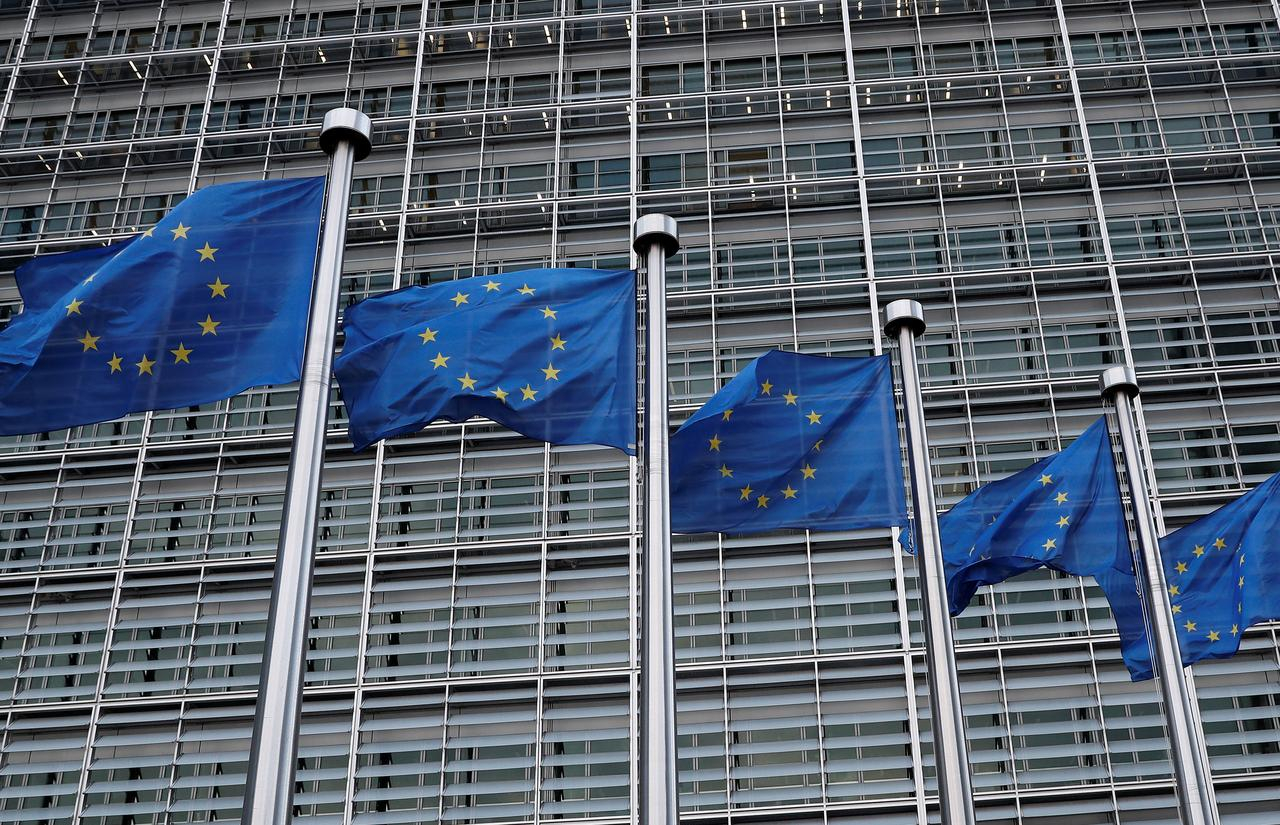
European Union flags outside the EU Commission headquarters in Brussels, Belgium. (Photo: CGTN)
The year 2019 marks the 30 years’ transition of Central and Eastern European countries, a region that experienced massive change since 1989. Under the Constitutional framework, the states have established a multi-party parliamentary system, set up separation of powers, held regular elections, and continuously improved the legal system. And most have a functioning market economy that has shown continuous growth.
Central and Eastern European countries are not only narrowing the gap between their economies and average economic levels of the European Union (EU) nations, but have gradually become a new growth engine for the EU economy.
The past 30 years have not changed geopolitical predicaments that have haunted these countries for centuries. Since the end of the Cold War, nations worldwide have enjoyed the benefits that emerged after the US-Soviet Union feud ended.
The world has entered a new stage of peace and development. However, this does not change the fact that Central and Eastern Europe region is a hot spot of strategic significance for big powers and continues to witness long-standing rivalries.
There seems to be a golden rule in modern and contemporary European international relations that, for security reasons, most small and medium-sized countries choose to align themselves with single powers or blocs, and they choose various allies at different times and it continues to be the case long after the end of the Cold War.
Out of political, economic, military, and geopolitical considerations, with various regional and sub-regional organizations in the European region, Europe has become the region with the most concentrated international organization network.
A few Central and Eastern European countries in the former Soviet bloc “returned to Europe” after exiting the Warsaw Pact, requesting to join the North Atlantic Treaty Organization (NATO), which offers security guarantee while the EU provides economic and development support.
Today, 13 Central and Eastern European countries are NATO members, while 11 have joined the EU, while the other countries are expected to join either group. This is the first time in the modern era that Central and Eastern European countries have participated in Europe with full sovereignty and can share part of other countries’ sovereignty.
Central and Eastern European countries, confronted with multiple crises in Europe, are seeking a path of political and economic development in line with their interests within the EU framework, thus affecting EU governance, common policies and European integration.
Given the growing regional power of the Central and Eastern Europe and its increasing impact on related factors, major world political powers all wish to boost their influence in the region out of their own interests.
These nations, in particular, have started a new competition in the region. At present, there are five major forces active in the Central and Eastern European arena: the EU, Germany, the US, Russia, and China.
As more Central and Eastern European countries join the EU, it is natural that the EU will take advantage of institutional ties to regulate the political, economic and social lives of its members.
It is for this reason that most countries in Central and Eastern Europe have completed the “grand project” of social transformation in less than 30 years. Germany, the biggest beneficiary of EU’s eastward expansion due to its geographic proximity, developed economy and market size. It has become the largest partner and source of funds for many Central and Eastern European countries in foreign trade.
By launching the Berlin Process, Germany has promoted EU expansion in the western Balkan region to obtain economic and political benefits. Russia is an old ally of Central and Eastern European countries. Adhering to its traditional security concept, Russia makes use of its advantages – its resources and close connection with Orthodox Church as well as Slavic peoples – to maintain its influence in some Central and Eastern European countries to resist NATO’s containment of Russia.
In recent years, Russia’s involvement in Central and Eastern European countries, especially with the Balkan nations, has aroused strong vigilance in European countries and the US, while the US has strengthened its influence over the years.
While sanctioning Russia on the issue of Crimea, the US greatly strengthened its military presence in Central and Eastern Europe and transformed the countries bordering the Baltic Sea and the Black Sea into NATO’s eastern front to confront Russia militarily.
As a latecomer, China has launched multi-faceted cooperation efforts with Central and Eastern European countries. However, some nations expressed concerns out of self-interest and a precautionary mentality and tried various approaches to interfere or constrain such cooperation.
While continuing to promote cooperation with Central and Eastern European countries, China adheres to established diplomatic policies, calmly observes changing European geopolitics, reviews and assesses situations, and meanwhile, cooperates rationally with other states while trying its best to safeguard national interests.
The author is research fellow at Institute of East European, Russian, and Central Asian Studies, Chinese Academy of Social Sciences. opinion@globaltimes.com.cn


